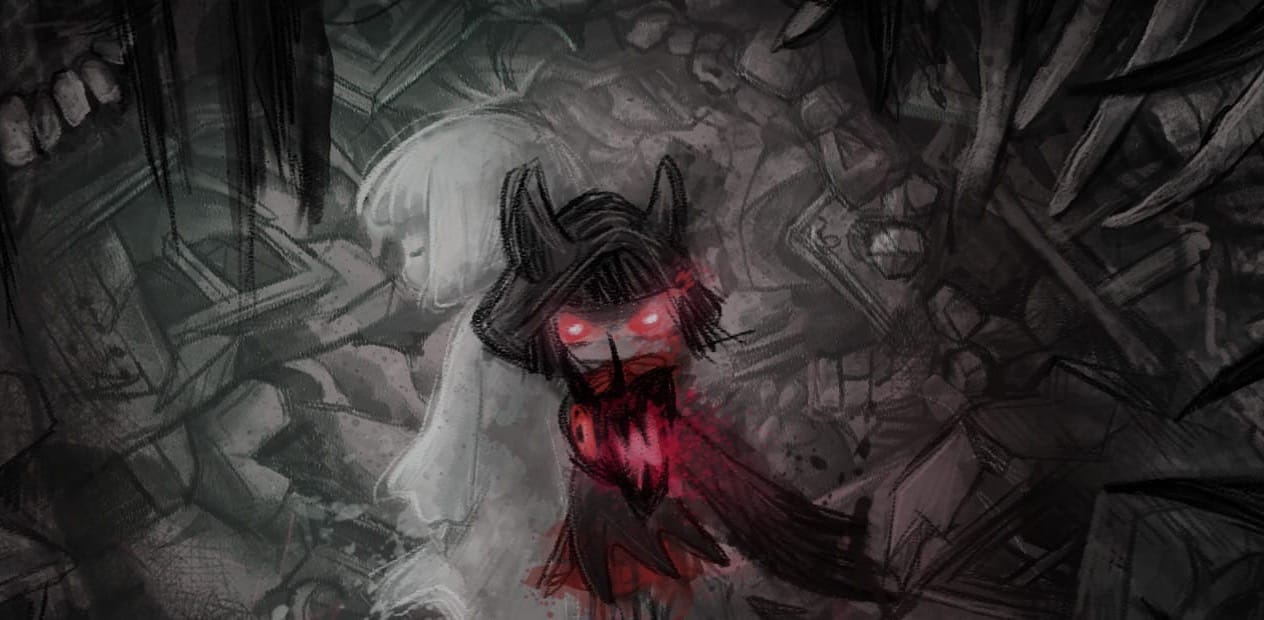How NeverAwake Helps You Fight Your Nightmares
When your mind is scarier than the real world

I've recently finished playing NeverAwake on the Switch, a twin-stick shooter where you help a girl named Rem face her fears and insecurities. Rem appears as a dark magical girl shooting at little phobias like vegetables, and big ones like hospital needles. She gathers souls from them, and enough souls let her complete a level, with bosses appearing at the end of each world. Additional features reduce the game's difficulty, like Auto-Aim for every level and increased shields, if a level is hard to navigate.

Subconscious Monsters
The fascinating part about NeverAwake's game design is that everyday objects, people, and animals inspire each monster. While the tomato dragons were annoying, a trip to the dentist becomes nightmarish as you avoid the dreaded teeth while shooting away. Teddy bears attack in droves while beloved dolls twist into formidable bosses. Rem even has to fight her sister in the end, as a beautiful angel with giant hands.
This concept reminds me of how children's nightmares are more vivid than those of adults. Later in our lives, nightmares can include driving to work late or realizing you haven't studied for a test. When you're a kid, phobias can emerge with monsters in dreams.
Rem's nightmares are easier to process because she has a weapon to fight them. She gets stronger with each lap and level completion, and her mind heals as her body recovers. Each victory brings courage, and with it, the hope that maybe these dogs and people will be easier to face.
What To Mend?
Given that the world map is Rem with a hole in her chest, the game implies that some external events caused her heartbreak. The journal entries confirm that while her grandmother's death was the catalyst, life has hurt her many times. From emotionally abusive parents to less-than-satisfying school life, Rem has absorbed her pain and willed it to the subconscious. Journaling can only provide so much comfort. She doesn't have a proper outlet to handle these conflicts and process them. As a result, her coma manifests all these repressed feelings and anxieties.
We mend all those heartbreaks by helping her face her fears and blasting them into healing souls. While a part of Rem would rather stay with the nightmares, since at least they are familiar, the other part knows that she is strong and brave enough to return to the real world and recover from her coma.

Compared to the rest of the game, the end of NeverAwake is quite straightforward. After all the monsters and bosses, Rem wakes up with a new determination to seize the day and face the objects that scare her. We see end credits that illustrate just that, with each new fear, like vegetables and dogs becoming manageable.
If you choose to, however, you can unlock a Route B that leads to a bad ending, but that type of one hundred percent completion is not my cup of tea. After spending all the time trying to help Rem wake up, it feels counterintuitive to destroy that mindset.
I admit I was a little dissatisfied at the end of the Main Route, where after all that heartbreak and traveling through different parts of Rem's body, she wakes up. To find out how things change, one has to find extra journal entries to understand what happened in the real world. The ending credits help a little when we see Rem adjusting after waking up in the hospital and recovering at home.
At the same time, I understand this was the point. Ultimately, Rem's bad dreams are not real. As she says to herself, she needs to face her fears in the real world, rather than avoid them. By playing the game again and unlocking Route B, we anchor Rem in the dream world again rather than helping her escape it.

I really enjoyed playing NeverAwake (minor quibbles aside) and seeing the new creativity that games bring to different genres. My nightmares have involved more fighting back and surviving, and that may be thanks to helping Rem with her journey.